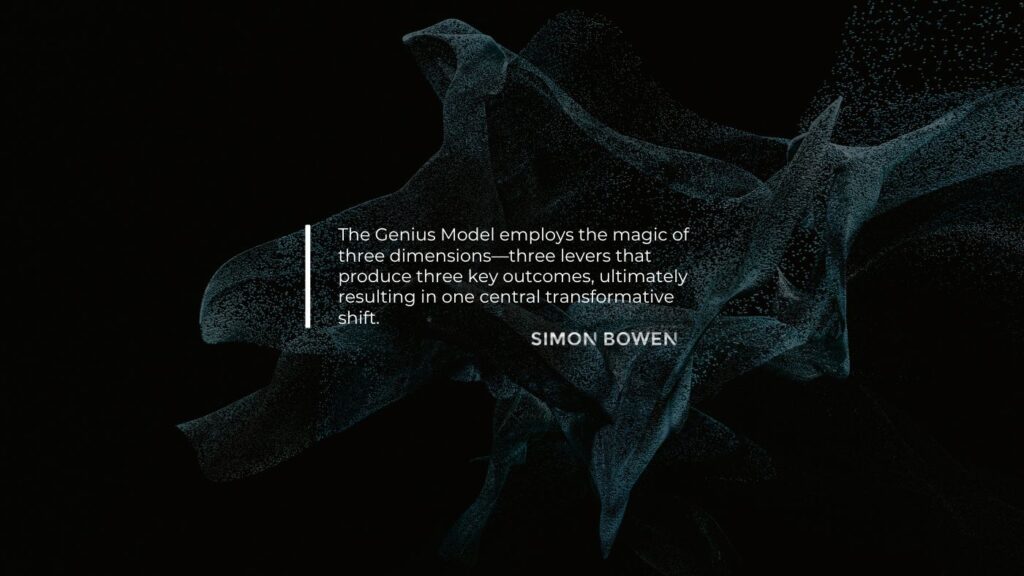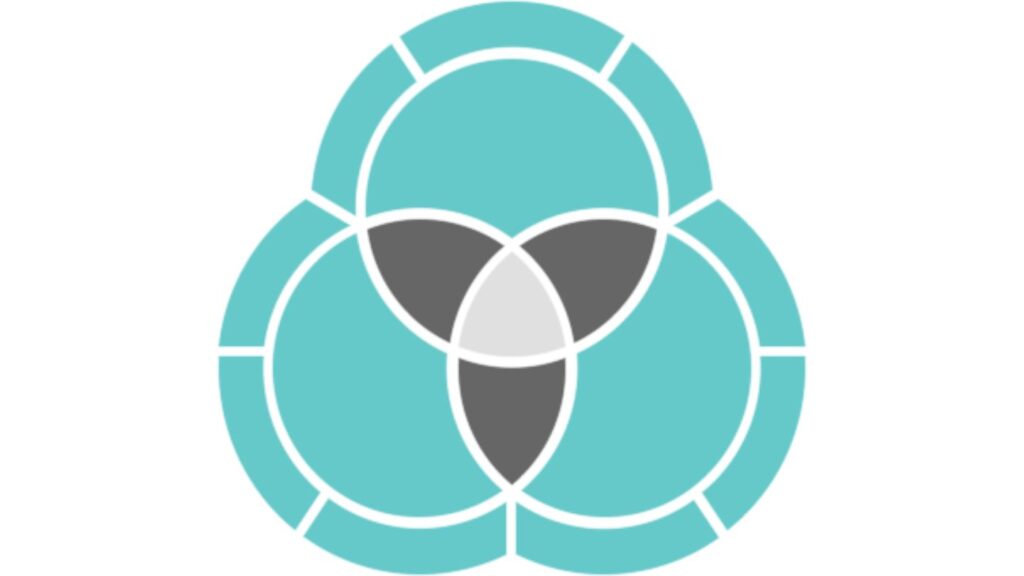From the earliest days of civilization, humans sought ingenious ways to bridge the gap between thought and understanding. And in this pursuit, one remarkable tool emerged as a beacon of clarity—geometry.
Drawing models and creating visual representations have been integral to our human narrative since time immemorial. Long before the advent of written language or digital communication, our ancestors turned to the canvas of visual geometry to share knowledge, transmit wisdom, and unlock the secrets of the world around them. Geometry, with its capacity to distil intricate concepts into tangible forms, served as one of the very first languages of human expression.
Today, geometry and visual models in leadership, business, and innovation are equally as powerful as a tool for understanding and persuasion.
One & Two Dimensional Models: Navigating Continuums and Matrices
Our journey into visual geometry begins with the elegance of simplicity—continuums and two-by-two matrices. These one and two-dimensional models offer a straightforward means of comparison and contrast. They provide a clear path for understanding the relationships between variables, guiding us through the spectrum of possibilities.
Consider a continuum—a straight line that encapsulates a single dimension. It’s a tool often used to illustrate concepts like “less to more,” “beginning to end,” or “low to high.” A glance at this linear representation instantly conveys a sense of progression or scale.
The two-by-two matrix, on the other hand, introduces a dual-dimension dynamic. The comparative model invites us to explore two variables in tandem, allowing us to navigate the intersections and divergences within. We determine if a concept falls within the “yes-no” spectrum or belongs to the “high-low” quadrant.
Three-Dimensional Models: The Poetry of Venn Diagrams and Triangles
The art of simplifying complexity begins to unfold in three-dimensional models. Here, we encounter the artistry of Venn diagrams, triangles, and other multifaceted shapes. These visual wonders hold a unique allure for the presenter and the recipient of information.
Picture a Venn diagram composed of three intersecting circles. Each circle represents a critical dimension of an idea or concept. What makes this representation so compelling is its ability to convey the intricacies of relationships among these dimensions. It’s a choreography of overlaps, a dance of insights where each circle adds depth and nuance to the narrative.
With their inherent stability and balance, triangular models serve as reliable guides in crafting visual explanations. A complete triangle offers a sense of unity that resonates with the human mind. As dimensions come together within this geometric framework, the result is a harmonious composition that aids in comprehending complexity with grace.
Four and More Dimensional Models: The Challenge of Ikigai
As concepts become more complex, we can often be romanced to use MORE…. Adding more shapes, angles, and words allows us to explain a complicated process further. But the opposite is actually true.
The Japanese philosophy of Ikigai, which explores the sense of purpose in life, is a four-dimensional model. Visualized as a four-circle Venn diagram, it attempts to encompass the myriad dimensions of our existence.
Ikigai’s complexity lies not only in its four circles but also in the multitude of dimensions contained within. It is a labyrinth of life’s intricacies, a puzzle whose pieces extend in all directions. While profound, the challenge with this model lies in its comprehensibility. Few can confidently navigate its corridors and grasp its meaning, so it remains a relatively obscure concept outside its cultural origin.

Geometry to Persuade: The Origin of the Genius Model
Over decades of leading, facilitating, teaching, and mentoring, I almost always return to the magic number—three—for its uncanny ability to distil complex concepts into an elegant simplicity. It was the ideal foundation to construct the Genius Model, my proprietary masterpiece that has left an indelible mark on leadership, business, and innovation.
The Genius Model, a Venn diagram adorned with three additional pieces encircling each of its three core circles, is a testament to threes’ transformative potential. But why three? I recognized that the triad struck the perfect balance, unlike two-dimensional models that felt lacking and four-dimensional ones that proved overwhelming. It harmonized the need for comprehensiveness with the requirement for clarity.
Three is an interesting number. It’s deeply ingrained in the human psyche … get three quotes, three blind mice, three little pigs, the three act play and so on. We often even remember long phone numbers in groups of three digits. Mathematically, you need at least three of anything to establish a pattern. A pair cannot establish a pattern beyond itself.
In crafting the Genius Model, I can dissect the essence of genius within an individual or an organization. At its core lies three key levers, each representing a fundamental aspect of genius. These levers conspired to produce three pivotal outcomes, which, in turn, orchestrated one central and profound shift. The Genius Model crystallized these dynamics, encapsulating the very essence of genius within its structured geometry.

The Genius Model employs the magic of three dimensions—three levers that produce three key outcomes, ultimately resulting in one central transformative shift. Simon Bowen
When attempting to unpack the genius of a company, applying a three-circle Venn diagram becomes a beacon of clarity. Each circle signifies a crucial lever, and their interactions create a symphony of insights. But it continues; the model delves further, exploring the three capabilities behind each lever. It’s a meticulous deconstruction, a journey into the heart of complexity.

My devotion to threes extends beyond mere numerical aesthetics, rooted in the human psyche’s preference for balance and symmetry. People crave equilibrium, detesting any form of imbalance. I’ve tested five accelerators on one end, two on another, and three on a third—but it never worked. Balance, it turns out, is the key to making sense of complexity and the linchpin of understanding. It aligns with our cognitive preferences, creating a harmonious experience that aids memory and comprehension.
I’m so proud that the Genius Model’s trinity of levers, outcomes, and shifts has emerged as a blueprint for successful communication and influence. The triadic geometry formed an inherently safe vessel through which ideas and concepts can flow.
Join my weekly newsletter for more updates and inspiration. If you’re ready to speak about bringing more genius to your leadership, start by applying to work with me so we can get to know one another better.










